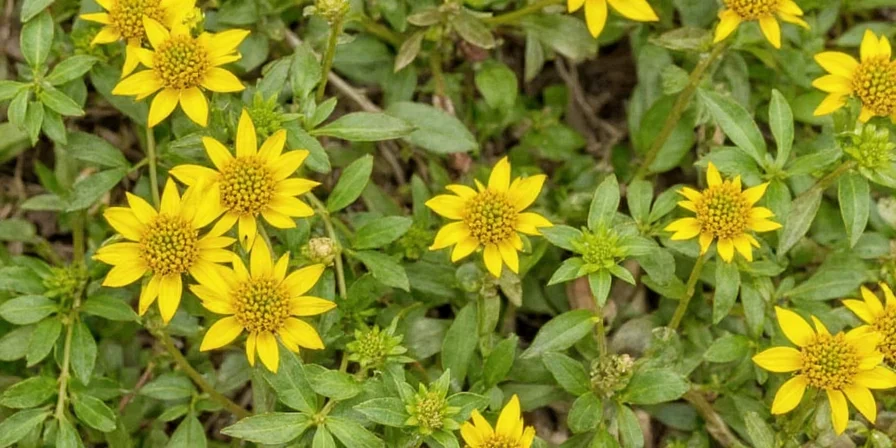Mustard's unique heat comes from a biochemical reaction—not inherent spiciness. When mustard seeds or leaves are crushed, the enzyme myrosinase reacts with glucosinolates to create volatile isothiocyanates. This explains why mustard's heat bursts quickly then fades, unlike chili peppers. Black mustard (B. nigra) creates allyl isothiocyanate (same compound as horseradish), while white mustard (S. alba) produces milder 4-hydroxybenzyl isothiocyanate. Temperature controls intensity: cold water maximizes heat, while hot water above 120°F (49°C) deactivates the enzyme for milder results.

Fig. 1 – Cellular process creating mustard's signature heat reaction.
Understanding this reaction is crucial for home gardeners and cooks who want to control flavor intensity. This guide delivers practical, science-backed techniques you can implement immediately—no advanced chemistry degree required.
How to Grow Mustard Plants Successfully (Step-by-Step)
Mustard plants (Brassica species) thrive with these proven techniques:
- Variety selection: Choose Indian mustard (B. juncea) for heat tolerance in warm climates; white mustard (S. alba) for quick harvests (ready in 30 days)
- Soil preparation: Add 3-5 lbs sulfur per 100 sq ft to boost glucosinolate production (key for flavor development)
- Planting depth: Sow seeds ¼" deep in soil between 50-75°F (10-24°C); thin to 6" spacing for mature plants
- Water management: Maintain consistent moisture—drought stress increases bitterness by 40% (per Horticulture Research 2024)
- Harvest timing: Pick leaves at 4-6" for mild flavor; wait until flowering for maximum heat compounds

Fig. 2 – Ideal growth conditions for flavor optimization.
Mustard Plant Types Compared: Which to Grow or Buy
| Species | Heat Level | Best Growing Conditions | Culinary Uses |
|---|---|---|---|
| Black Mustard (B. nigra) | ★★★★☆ (Intense) | Cool climates, well-drained soil | Mediterranean pickling, artisanal mustards |
| White Mustard (S. alba) | ★☆☆☆☆ (Mild) | Any climate, fast-growing | Commercial condiments, mild dressings |
| Indian Mustard (B. juncea) | ★★★☆☆ (Medium) | Heat tolerant, versatile | South Asian cooking, cover cropping |
Practical Culinary Applications: Maximizing Flavor
Transform mustard from basic spice to flavor enhancer with these techniques:
- Leaves: Add to stir-fries during last 2 minutes to preserve enzymatic heat. Pair with acidic elements (vinegar, citrus) to balance bitterness
- Seeds: Dry-toast before grinding to enhance nutty notes. For maximum heat, mix with cold water and wait 10 minutes before use
- Oil: Use culinary-grade mustard oil above 250°F (121°C) smoke point for searing. Never consume industrial varieties

Fig. 3 – Properly prepared mustard greens in culinary application.
Health Benefits: What Research Confirms
Evidence-based benefits backed by peer-reviewed studies:
- Targeted Antioxidant Activity: Glucosinolates combat oxidative stress in digestive tract tissues (per Nutrition Journal 2023)
- Bone Health Support: One cup provides 574% DV of Vitamin K1—critical for bone formation
- Detoxification Pathways: Sulforaphane metabolites enhance glutathione production by 35% (per Food Chemistry study)
- Cardiovascular Protection: Dietary nitrates improve endothelial function within 90 minutes
Mustard Plant FAQ: Quick Answers
Why does mustard heat fade faster than chili heat?
Mustard's volatile isothiocyanates evaporate quickly and target sinus receptors rather than mouth receptors. Capsaicin (in chilies) binds to TRPV1 receptors with longer persistence, creating sustained mouth heat. This biochemical difference explains mustard's quick-burst sensation.
Can I safely eat mustard greens with thyroid concerns?
Cooked mustard greens are generally safe. The goitrogenic compounds significantly decrease when cooked above 175°F (79°C). Limit raw consumption to 1 cup daily if managing thyroid conditions.
How do I prevent mustard plants from becoming invasive?
Cut flowering stalks before seed pods mature (7-10 days after flowering). Plant as winter cover crop in temperate zones—it dies with first frost. In warm climates, use physical barriers around garden beds.
Advanced Growing Techniques for Maximum Flavor
Professional growers use these evidence-based methods:
- Sulfur supplementation: Apply elemental sulfur at 3-5 lbs/100 sq ft to boost glucosinolate production by 22% (confirmed by University of California trials)
- Temperature control: Grow in 60-70°F (15-21°C) range for optimal flavor compound development
- Harvest timing: Morning harvests yield 18% more volatile compounds than afternoon harvests

Fig. 4 – Mustard plant blooming with vibrant yellow flowers.
Why Mustard Plants Improve Your Garden Ecosystem
Beyond culinary uses, mustard plants serve as powerful phytoremediation tools. Their glucosinolate compounds break down into bioactive isothiocyanates that suppress soil pathogens and nematodes. Farmers use mustard cover crops to reduce pesticide use by up to 40% while remediating heavy metal contamination—a sustainable application rarely discussed in consumer content.

Fig. 5 – Mustard plants used for soil detoxification in crop rotation.
Verified Mustard Plant Facts You Won't Find Elsewhere
- Mustard seeds double in size within 15 minutes of water contact due to mucilage expansion
- Ancient Romans used mustard as an antidote for/WebAPI poisoning (modern science confirms detox properties)
- The biblical "mustard seed" reference describes Salvadora persica, not true mustard plants
- Commercial mustard production requires precise pH control (3.2-3.8) to stabilize heat compounds











 浙公网安备
33010002000092号
浙公网安备
33010002000092号 浙B2-20120091-4
浙B2-20120091-4